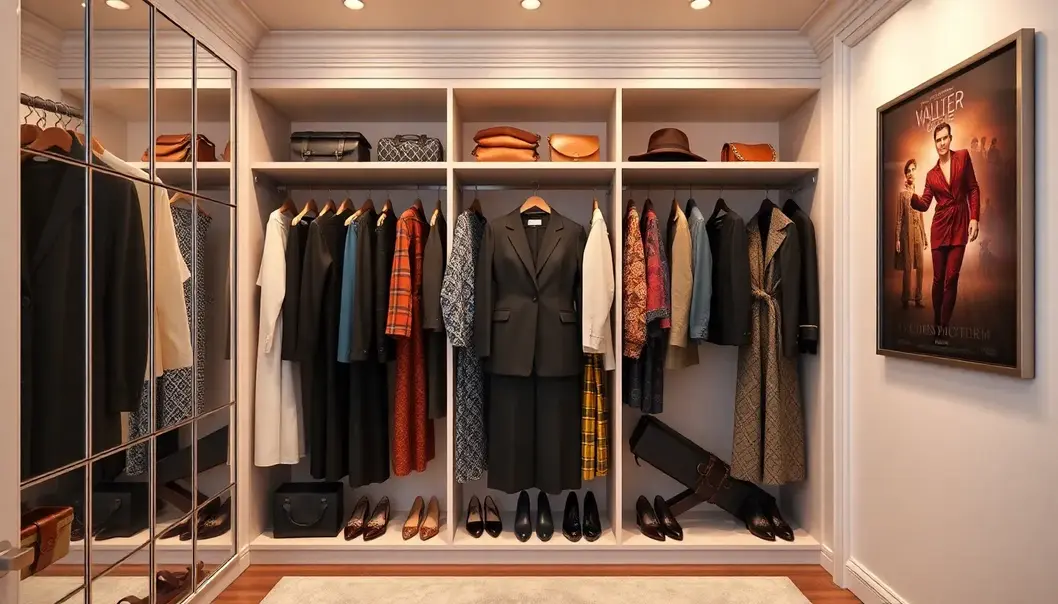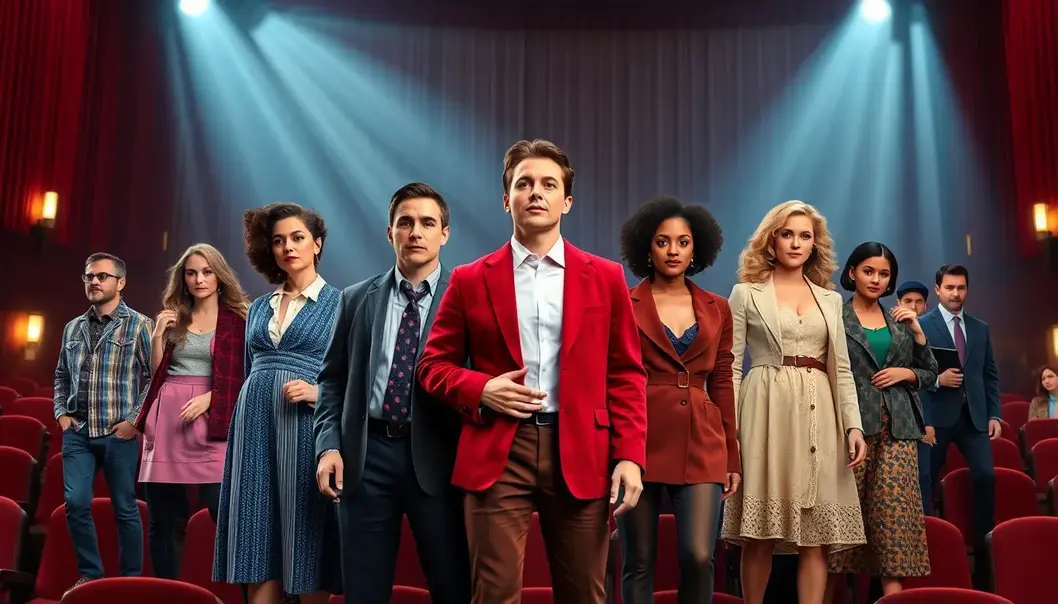The life of a cinephile is much like a constantly fluctuating cinematic narrative. Just as movie plots twist and turn, our bodies undergo changes, especially with the fluctuating weight that can feel daunting yet deeply personal. When it comes to wardrobe planning for these transformations, inspiration can be found within the frames of our favorite films. Adapting style tactics from beloved characters and smartly selecting versatile pieces can make this journey not only manageable but cinematically charming. This guide explores how cinephiles can draw from on-screen characters and narratives to plan wardrobes that flex alongside life’s ups and downs with stylish grace.
Curtain Up: Learning from Character Arcs
![]()
Cinema is a world where transformations are often as much about the soul as they are about the sartorial. In film, wardrobe reflects character growth, externalizing inner narratives. As heroes and heroines evolve, their clothing mirrors these changes. This can be particularly instructive when considering real-life wardrobe strategies that accommodate weight fluctuations.
Consider the saga of Tony Stark in the Marvel Cinematic Universe. Stark’s journey begins with an ostentatious display of wealth—sharp suits and ties accentuating his sleek confidence and arrogance. As Iron Man, he transitions through various iterations of his iconic armor, each version not only technologically advanced but also reflective of internal growth—from self-centric playboy to self-sacrificing hero. His suits aren’t just armor; they adapt and change with his character, embodying resilience—both emotionally and physically. For those dealing with personal transformations, Stark’s adaptability can inspire flexible wardrobe choices. The use of layers and structured but pliable fabrics can mirror this approach, offering both comfort and style in fluctuating body conditions.
Then there’s Bridget Jones, who embarks on both physical and emotional journeys throughout her story. Her wardrobe evolves from comfortable but ill-fitting outfits to more polished, well-fitting attire as she gains confidence. Bridget’s adaptive style, employing wrap dresses and forgiving silhouettes, provides a lesson in finding clothing that accommodates natural body changes while boosting self-assurance.
Exploring genre-bending characters like Neo from “The Matrix,” we see how costume design reflects a deeper understanding of oneself. Neo’s transition from mundane garb to the sleek, black iconic coat symbolizes his acceptance of a new reality and his evolution into The One. Such transformative wardrobe choices are not just cinematic flair but can guide practical clothing strategies. Embracing a streamlined, monochromatic wardrobe with adjustable elements can create a continually adaptable style that feels empowering regardless of body shape.
Historical epics offer another avenue of learning. Think of Scarlett O’Hara in “Gone with the Wind.” As she navigates tumultuous times, her wardrobe is both a tool and a statement, adapting her Southern belle charm to the harsher realities she faces. Her transformation, aided by creatively repurposing materials (famously, curtains into a dress), highlights the importance of creativity in developing a wardrobe that evolves with personal narratives and economic realities.
In each of these films, wardrobe is not merely a collection of garments but a curated part of the character’s narrative arc. Understanding how these on-screen transformations offer real-world inspiration helps create a resilient wardrobe strategy, essential for navigating the uncertainties of weight and life changes. While our lives may not mirror Hollywood scripts, the lessons in flexibility and adaptation from cinema can be a guiding script for dressing to meet life’s own story arcs.
The Cinematic Wardrobe: Building Versatility

Imagine a wardrobe as versatile as a Hollywood icon, capable of adapting to its character’s triumphs and tribulations. This chapter focuses on building a flexible collection inspired by timeless cinema, where each piece holds the potential to reflect the ebb and flow of personal changes—especially size variations.
Film history gives us a treasure trove of garments that speak to the adaptability required for changing figures. Take, for example, the timeless wrap dress. This garment became a symbol of empowerment during the 1970s and remains a go-to piece on and off the screen. Its ability to adjust with a simple tug provides a flattering look regardless of minor weight fluctuations. A wrap dress can smoothly transition from a romantic afternoon scene to a polished evening event.
Similarly, adjustable belts serve as an anchor to countless iconic looks. Film characters often express their evolving stories through accessories, and a belt allows for the subtle tailoring of garments, ensuring they continue to fit well. When cinched appropriately, a belt can make an oversized shirt or dress transform into a chic ensemble that complements evolving body shapes while adding a touch of character.
Layering is another cinematic strategy that enhances wardrobe versatility. A classic trench coat, reminiscent of noir films, effortlessly layers over fluctuating sizes while providing drama and style. Consider how this staple can traverse through the scenes of one’s daily life, from work meetings to leisurely strolls. Pants and tops featuring elastic waists or adjustable fastenings are yet more examples of adaptable clothing seen in cinema.
Iconic characters like Indiana Jones demonstrate the power of layering. His rugged look, composed of a comfortable shirt under a tough jacket, suggests practicality while accommodating physically demanding roles. Cinéphiles can adopt similar tactics, mixing cardigans over dresses or pairing jackets with versatile tops to keep both comfort and style within reach.
To build a cinematic wardrobe savvy to personal evolution, think of it as a constantly adapting screenplay—a narrative alive with change. By investing in these versatile pieces and borrowing cues from the beloved films of our past, one creates not only a flexible wardrobe but a dynamic extension of personal style. For additional inspiration on diverse styles and palettes, you may explore topics beyond the world of fashion in our blog, drawing parallels between fashion and more colorful realms.
Final words
Whether you envision yourself as the protagonist of a classic noir or a futuristic saga, wardrobe planning for weight changes need not be a daunting task. By drawing inspiration from the characters we cherish, each transformation becomes an opportunity to reinvent our style narrative with flair. In embracing the flexibility of iconic film wardrobes and borrowing cinematic cues, cinephiles can weave their personal stories with both creativity and confidence.
Embrace your own cinematic journey and redefine your style narrative!
Learn more: https://www.filmstylistsolutions.com/start-your-journey
About us
FilmStylist Solutions offers personalized wardrobe consulting, inspired by film and tailored to your evolving style needs, ensuring your closet supports every change and challenge you face.

